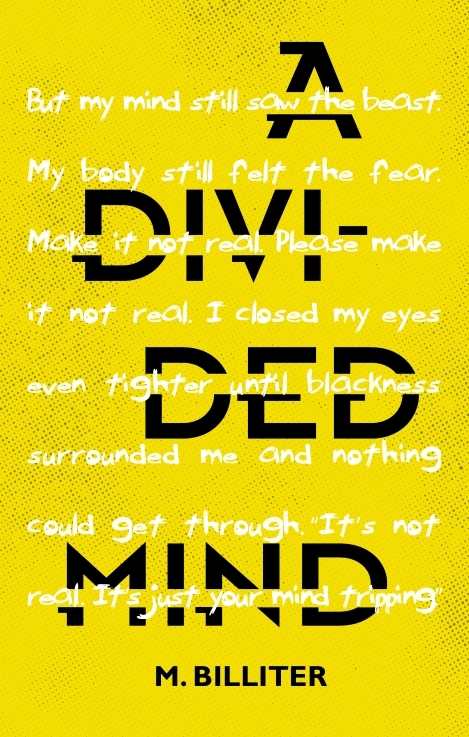A Divided Mind
A teenager fights for his sanity as his mother fights to support him in A Divided Mind, M. Billiter’s emotional portrait of mental illness.
Seventeen-year-old Branson has a supportive family, a wonderful girlfriend, and a bright future with the navy. But there’s something else that no one knows: Branson has been hearing voices since he was in the eighth grade. The voices have gotten worse and have turned into hallucinations, and his situation comes to a head when he blacks out at school.
Branson’s mother, Tara, can’t believe that her bright, empathetic little boy could have a schizoid affective disorder. As she struggles to understand her son and prioritize his treatment, she learns to accept that their entire lives have changed.
The story alternates between Branson and Tara’s distinct and believable points-of-view and depicts a family on the edge. It probes both of their psyches, resulting in a well-rounded account of how mental illness shatters lives, but also offers a chance for redemption. Neither main character is either a hero or a villain; rather, both are good people trying to deal with an impossible situation.
The book does an excellent job of showing how mental illness changes people’s expectations, hopes for the future, and way of viewing life in its entirety. Tara’s journey toward accepting her son’s new future is just as profound as Branson’s path toward redefining his self-image.
An emotional page-turner, A Divided Mind redefines what a “normal” family looks like. It is an important story for those who want to better understand mental illness, especially as it is experienced by teenagers.
Reviewed by
Angela McQuay
Disclosure: This article is not an endorsement, but a review. The publisher of this book provided free copies of the book to have their book reviewed by a professional reviewer. No fee was paid by the publisher for this review. Foreword Reviews only recommends books that we love. Foreword Magazine, Inc. is disclosing this in accordance with the Federal Trade Commission’s 16 CFR, Part 255.

